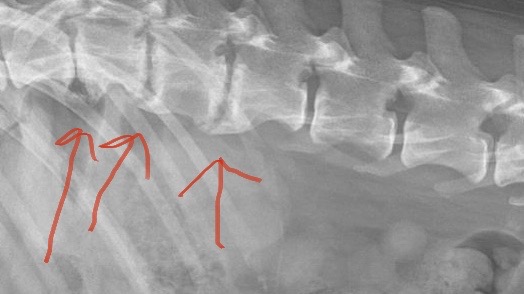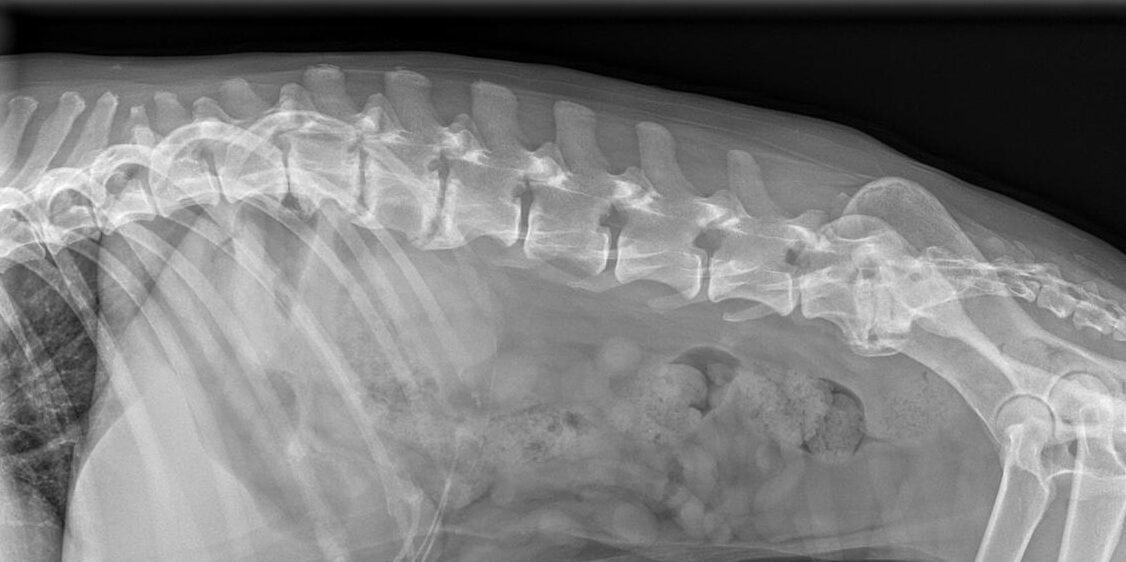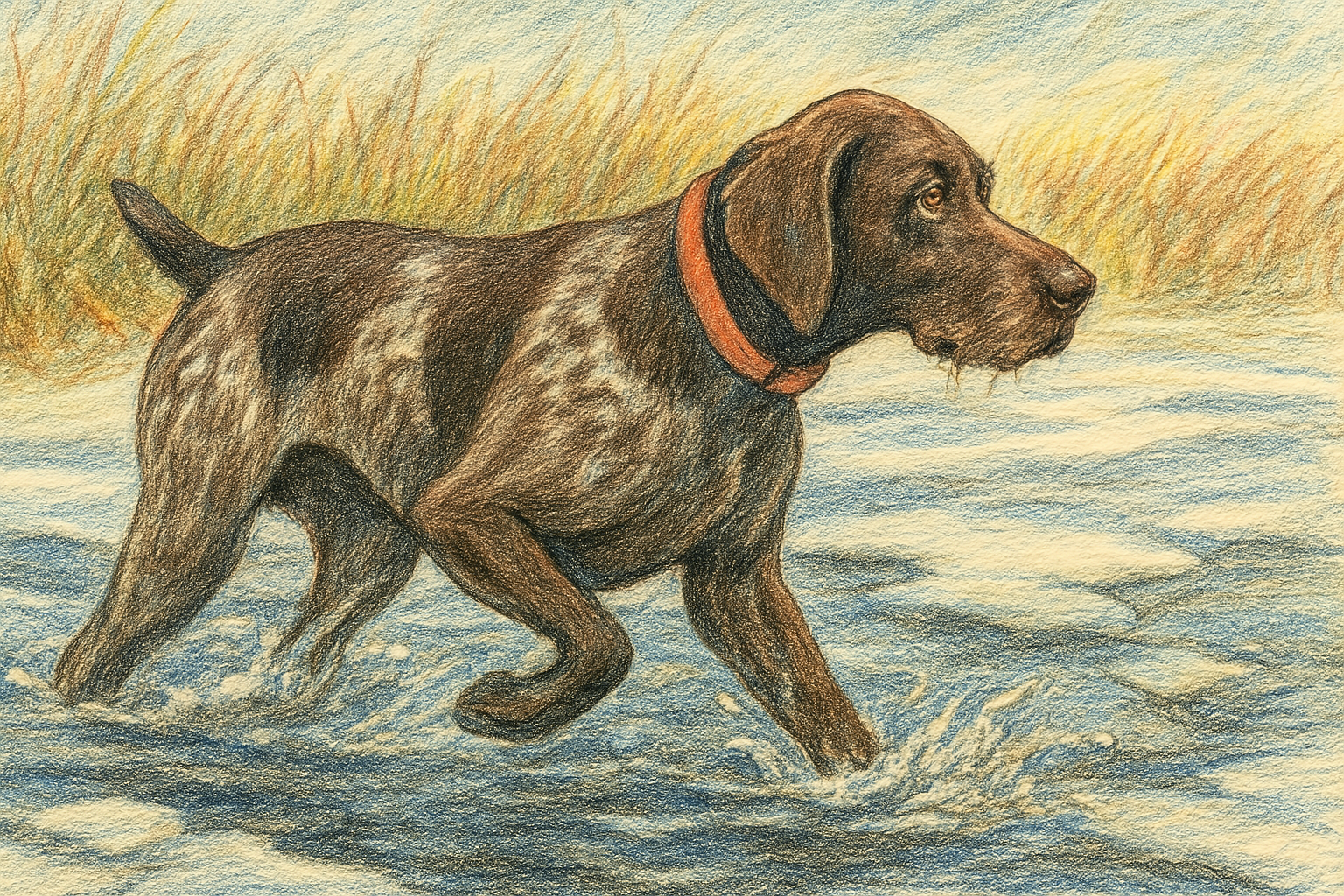Understanding and Managing Back Issues
While the hips may get most of the discussion I think the most underdiagnosed, and likely most common issue causing lameness or soreness, is the spine. I believe the spine is often the real culprit behind many symptoms attributed to hip dysplasia or arthritis, especially in older dogs.
The spine is incredibly dynamic and plays a crucial role in a dog’s mobility. It’s made up of three main segments:
- The cervical spine, which controls the neck
- The thoracic spine, which corresponds to the rib cage
- The lumbar spine, which connects to the hips
Instead of thinking of the spine as a rigid rod, imagine it as a series of individual joints with intervertebral discs acting as cushions between them. These discs are like jelly donuts—soft and flexible on the outside, with a fluid center. However, just like a donut left out too long, these discs age as a dog gets older.
The Aging Process of the Spine
As these discs age, they lose flexibility, the outside can become brittle, and the “jelly” inside may start to leak out. This process can put pressure on the spinal cord, causing significant discomfort and mobility issues for our dogs. Sound familiar? Think of how many people you know—including some of us creeping into middle age or beyond—that struggle with back pain. That same shooting pain and protective muscle tightening… our dogs experience it too.
Just like us, when a dog experiences this kind of pain, their muscles go into overdrive to protect the affected area, which often leads to further complications. Let’s take a closer look at the issues dogs face with their spines, we will first focus on Intervertebral Disc Disease (IVDD) and how it impacts mobility.
Intervertebral Disc Disease (IVDD)
The most common spinal issue I see in dogs is Intervertebral Disc Disease or IVDD. As I mentioned, it’s like that aging jelly donut losing its consistency. Sometimes, pieces break off, or the jelly leaks out, putting pressure on the spinal cord or nerves. The symptoms of IVDD can mimic hip dysplasia – your dog might be reluctant to jump onto furniture, into the back of the truck, flopping to lie down or having difficulty getting up.
In more severe cases, you may notice your dog dragging their rear toes, stumbling, or appearing to lose motor control. This is where it often trips people up because regular x-rays might not reveal the problem. Even if a disc has calcified and shows up on an x-ray, that doesn’t always mean that’s the problematic area. The purpose of x-rays is more about ruling out other issues, like cancer or infections in the spine, rather than providing a clear picture of what’s going on with the discs.
Real-World Examples – Belle and Maggie’s Stories

Let me share a couple of real-life cases. My dog, Belle, had these bony projections (see picture) coming off the bottom of her vertebra. When these projections started bumping into each other with activity, it caused her significant pain. Belle’s issues began when she was about seven and lasted on and off for the next 1-2 years. Even with this interruption she ended up hunting hard until she was 15 years old! Given time, these bony projections often bridge and stabilize. For Belle, once we got her through the initial pain and dysfunction, she had many more years to enjoy life.
Belle was incredibly athletic—my dad would call her “the Michael Jordan of the dog world.” But as her spine aged and changed, her agility lessened. She was still an excellent hunter, but her mobility was definitely impacted.

Then there was Maggie. Maggie didn’t experience pain as Belle did; her issue was more functional. She struggled to get up after a long day of hunting, and I even had to carry her at times. But, even on those nights when she needed to be carried, she was always raring to go the next morning. With the right treatment plan, she also went on to have a successful career well into double digits age. Cases like these remind us just how resilient these dogs can be when given the right care.
Treatment and Management
So, how do we treat dogs with back issues? The answer isn’t just throwing anti-inflammatories at the problem. Yes, there is a time and place for these medications, but in most cases, the real issue is the muscles along the back. When a dog experiences shooting pain, they tense up to protect themselves, and the muscles seize up. This often leads to more compensatory issues than actual inflammation at the site of the disc.
My approach involves two main steps: addressing the pain and focusing on rehabilitation. If there’s clear pain upon palpation of the spine, I’ll prescribe anti-inflammatories. For muscle issues, I often use a muscle relaxant. However, the most crucial component is rehabilitation therapy. Stretching and targeted exercises help release tension in those muscles, strengthen them, and improve overall mobility. This approach is much more effective than relying solely on medication.
Long-Term Medication – The Role of Galliprant
Now, those who’ve followed me for a while know I’m not one for long-term medication use. However, there are exceptions. My dog Belle responded incredibly well to a drug called Galliprant. It was like the fountain of youth for her. Instead of constantly treating flare-ups, Galliprant helped keep her condition appear more stable, preventing those dramatic episodes from occurring as frequently. She had a good quality of life right up until the end, which is ultimately what we want for these dogs. In her case, we were lucky to get both quality and quantity—she lived a fulfilling life to 16 and a half.
Paralysis and More Severe Conditions
Let’s briefly talk about conditions that can lead to paralysis. These tend to fall into three categories:
- Fibrocartilaginous Embolism (FCE) – Typically seen in younger, athletic dogs, FCE occurs when a piece of cartilage enters the bloodstream and blocks blood flow to the spinal cord. The dog might be running one moment and paralyzed the next. Symptoms vary depending on where the blockage occurs, from complete paralysis to just affecting one limb.
- Disc Ruptures – Most common in middle-aged to older dogs. This condition occurs when the disc ruptures and presses against the spinal cord. Breeds like Dachshunds are textbook examples, but sporting dogs can experience this too. Treatment can range from conservative management to emergency surgery, depending on the severity.
- Type Three Disc Ruptures – This often happens after a traumatic event. The disc ‘hits’ the spinal cord and then retreats, causing a bruising injury. Diagnosed with MRI scans, this condition typically affects younger to middle-aged dogs.
Accurate diagnosis is crucial because treatment plans can vary widely.
Conclusion – The Role of Diagnostics
One last note on diagnostics: as mentioned, x-rays provide some information but usually in ruling out major destructive concerns like infection or cancer. To visualize the spinal cord, you’ll need a CT scan or MRI. This is something that even confuses a lot of veterinarians. I’m old enough that we did not have either in vet school and even our x-rays weren’t digital but rather we processed actual films. While these modalities are used widely in metros it doesn’t mean that everyone is comfortable with the situations they are best used for.
CT is great for bone and compressive changes, while MRI is better for vascular issues, inflammation, or muscle changes. When spending thousands on a diagnostic test, it’s essential to choose the right one to increase the chances of getting an accurate answer.



